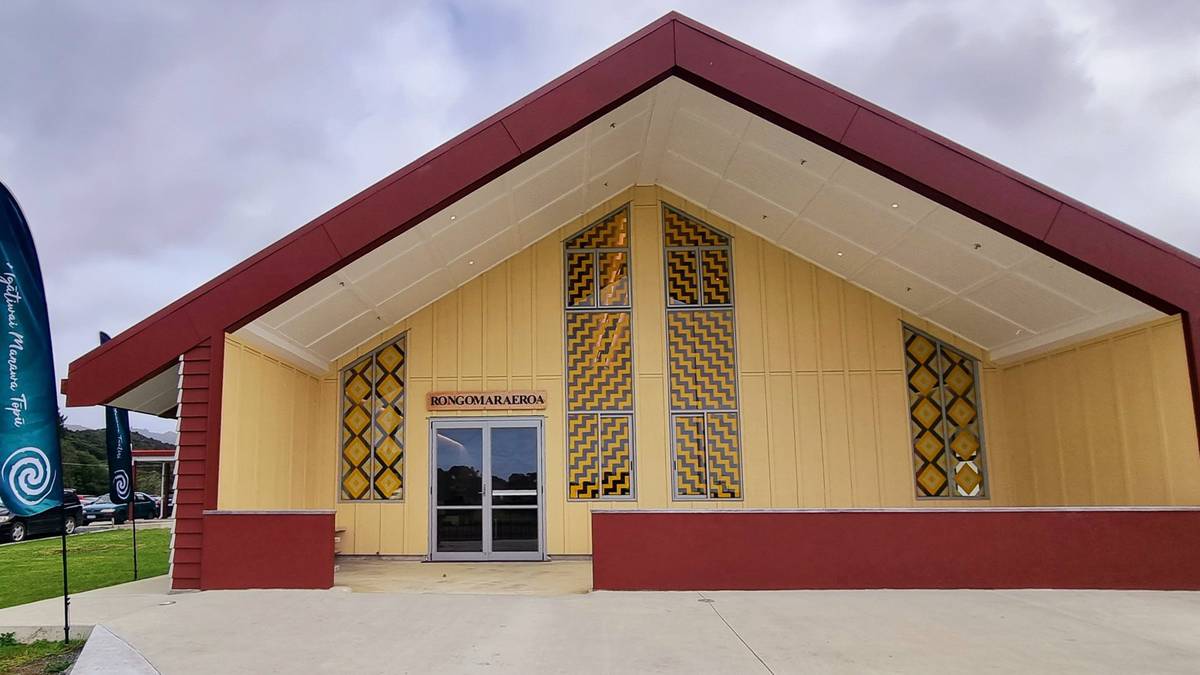Mokau Marae, near Whangaruru, is one of eight Ngātiwai marae involved in the solar power project. Photo / Te Poari o Ngātiwai
A solar power scheme at eight Ngātiwai marae is expected to also slash power costs for homes tapping into surplus electricity generated by marae solar panels.
The marae – which are spread along the east
coast from Ngāiotonga in the Far North to Pākiri in the Auckland region – have been granted funding for the solar project from the Ministry of Business, Innovation and Employment’s (MBIE) Māori and Public Housing Renewable Energy Fund.
Te Poari o Ngātiwai (Ngātiwai Trust Board), which secured the grant with help from Northland businesses, also plans to set up a “virtual power hub”.
That will allow households to use electricity not needed by the marae, slashing power bills by as much as $1000 a year.
The marae benefiting from the scheme are Tūparehuia, Ngāiotonga, Otetao Reti, Oakura and Mōkau (all in the Whangaruru area), along with Matapōuri and Ngunguru (Tūtūkākā Coast) and Omaha (near Pākiri).
Raukura (chief executive) Huhana Lyndon said it was not the first marae-based solar project in Aotearoa but it was the biggest so far in terms of geographical stretch.
It was a scaled-up version of a similar scheme operating at Ngāti Hine’s Tau Henare Marae and Eparaima Marae, northwest of Whangārei.
MBIE staff had told her households connected to virtual power hubs in other districts were saving up to $1000 a year.
The hub would be operated by Māori power company Nau Mai Rā.
“Nau Mai Rā picks up any surplus power that’s coming off the marae panels then shares it back into homes that are registered under our kaupapa,” Lyndon said.
“That’s transformational for us considering how expensive power is at the moment. Being able to subsidise our families through sharing power will be brilliant in terms of affiliation by helping people feel connected. It will also give marae the energy resilience they need to keep the lights on while sharing back to their descendants.”
/cloudfront-ap-southeast-2.images.arcpublishing.com/nzme/T5KH7AMOE5CEEKF62WR6I7KZCM.jpg)
A roadshow will explain how the system works and which homes will be able to hook up.
“A big part of it will be recruiting people to join our virtual power hub and share the benefits.”
Lyndon said it was a great collaboration between iwi, Government and local businesses Hubands Electrical and Nau Mai Rā.
Te Poari o Ngātiwai heamana (chairman) Aperahama Kerepeti-Edwards said power security was a big issue in Northland, and installing solar panels would lift a financial burden from hard-working marae committees.
The name of the scheme, Te Rangi Paki o Ngātiwai, could be translated as “a fine day shining on Te Iwi o Ngātiwai”.
Ngunguru Marae chairwoman Marlene Greene said it wasn’t yet clear how much would be saved but she expected it would be “a great help” for the marae committee.
Power and insurance were always at the top of the list of marae expenses.
The ability to share the benefits with the hau kainga (home people) was “absolutely” another drawcard, Greene said.
Installation is expected to take 12 months. The cost has not yet been made public by MBIE.
Currently Kerikeri High school has one of the biggest solar power systems in Northland. Its newly commissioned 174-kilowatt panel array has slashed the school’s power bills by more than half. Kaitaia College, Riverview School (Kerikeri), Collards Tavern (Kaitaia) and Homestead Tavern (Kerikeri) also have significant solar power systems.




